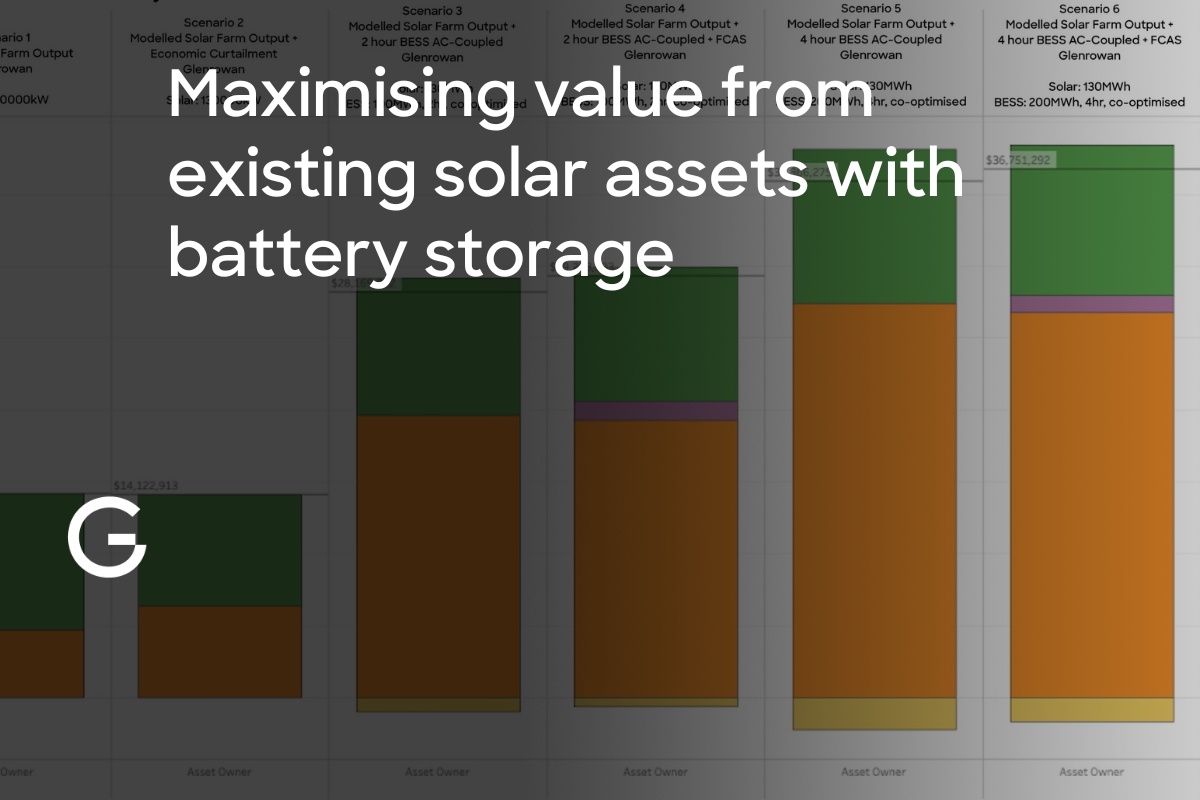Comparing Contingency Frequency Control Markets in Australia and the UK

In a recent blog post, we compared the financial case for installing solar (and optionally battery storage) to a supermarket in Australia versus the UK. That analysis only considered using the solar generation and battery storage to reduce spend on energy imported from the grid, and showed that although the solar irradiation in London was around two-thirds that of Sydney, the savings were much greater due to the nature of the network tariffs available in each location.
However, when considering the economics of deploying distributed energy resources, reducing spend on energy is only part of the picture. Grid edge assets are able to participate in markets and provide network support services. These new revenue streams can greatly affect the economics of the project and strengthen the case for deploying new assets. In this post we’ll look at one type of market, contingency frequency response, and compare the revenue opportunities in Australia and the UK.
What is Contingency Frequency Response?
The primary role of the System Operator is to maintain the security and reliability of the electricity grid. As well as operating a market for the sale and purchase of electrical power in specified time blocks, the operator must also procure reliability services in order to contain the system within its specified operating parameters (regulation services), and to quickly bring the system back into those operating parameters in the case of a fault (contingency services).
One operating parameter that must be maintained for the grid to remain stable is the frequency of the A/C being delivered. In both the UK and Australia, the frequency of the grid is 50Hz, with a narrow operating band around that specified frequency (49.8Hz – 50.2 Hz in the UK, 49.85Hz – 50.15 Hz in Australia). If the frequency strays outside that band, the system operator moves quickly to adjust generation or load in order to maintain the balance of supply and demand in the system. Although the System Operator is controlling the dispatch of generation and load, those resources are provided by market participants, and competitively bid for in specified time blocks.
In Australia, AEMO operates six FCAS (Frequency Control Ancillary Services) markets in the National Energy Market: fast raise and lower; slow raise and lower; and delayed raise and lower. In the UK, National Grid ESO operates two DC (Dynamic Containment) markets: low DC and high DC. These are relatively new services, with a soft launch for low DC in late 2020 and a full launch with low and high DC in late 2021.
How does FCAS compare to DC?
We’ve analysed what the FCAS and DC markets have been worth for the last few years. Going back to 2019 means we can include some of the more spectacular contingency events seen on the Australian NEM. For 2022, we’ve prorated the January-July figures, for an easier like-for-like comparison with previous years.

Our analysis shows that so far in 2022, the value that UK battery owners can capture from participating in the DC markets is over twice that of their Australian counterparts selling into the FCAS market. It remains to be seen whether those high prices in the DC markets will remain, or whether new entrants will drive down the price.
Asset owners will also want to try to stack frequency support with some other value streams like wholesale arbitrage. On that front the NEM in Australia is very different from the UK with $16,000/MWh top-to-bottom price swings and 5 minute settlement periods which are favourable to rapid operating characteristics of batteries.
Notes
- The six contingency FCAS markets in the NEM have been rolled up into two (FCAS Raise and FCAS Lower)
- The Australian NEM prices are taken from the NSW trading region
- Dynamic Containment Low (DCL) is equivalent to FCAS Raise and DCH to FCAS Lower
- All values presented in Australian dollars
Gridcognition’s powerful simulation and modelling software combines technical asset data with market data to help distributed asset owners and operators optimise their deployments. If you’d like us to help you plan your DER projects, please contact us!



.jpg)

.jpg)

